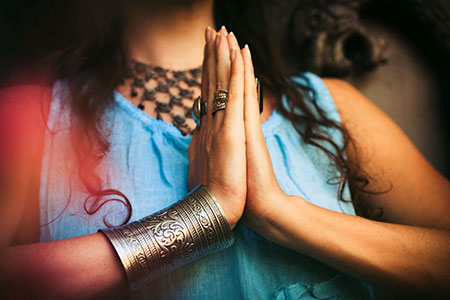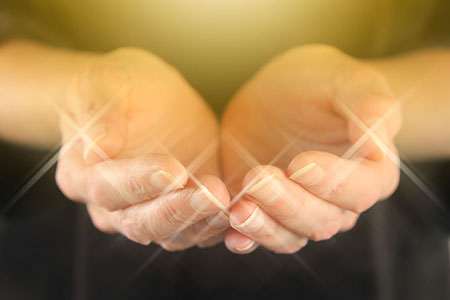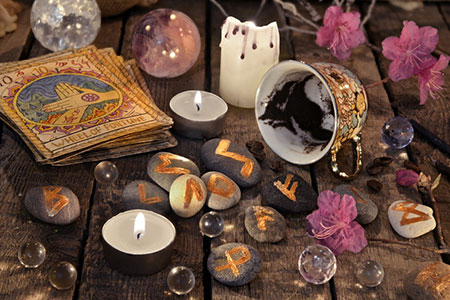traditions
The Spiritual Cleansing Of Negative Energies
 Negative energies and dark entities are sometimes misunderstood and misused concepts in spirituality. The term ‘negative energy’ is typically thought of as an ‘evil force’ that is intending harm to you, or something sinister that lies hidden in your home. But this is often not the case. I have a somewhat different view of this.
Negative energies and dark entities are sometimes misunderstood and misused concepts in spirituality. The term ‘negative energy’ is typically thought of as an ‘evil force’ that is intending harm to you, or something sinister that lies hidden in your home. But this is often not the case. I have a somewhat different view of this.
I believe much of the modern day fear and superstition around ‘dark entities’ may be due to the misunderstanding of old texts scribed in a style that may be too cryptic for today’s language and worldview. There are many instances in both Christian and Buddhist religious literature, for example, in which ‘demons’ are mentioned, but in my opinion they are referring to these phenomena in a poetic manner, as a metaphor.
One clear example of this is the so-called ‘Noonday Demon,’ or ‘Midday Devil’ found in Psalm 90:6 of the Hebrew Bible. It is a demonic figure believed to be active around noon every day to make people restless, distracted and excitable, causing its victims to neglect their work or duties. Well, we all know that sluggish feeling we tend to get after a lunch hour. The digestive process takes quite a bit of our energy, and spikes in our insulin levels, as well as neurotransmitters like serotonin and melatonin, doesn´t help to keep our focus on a specific task.
The solution proposed in traditional texts for this ‘demonic activity’ does not, however, involve exorcisms with Holy Water or other radical metaphysical interventions. Instead what is recommend is mere tenacity and patience. It is evidently more of a normal, physical challenge that one has to overcome, instead of it being a ‘psychic attack by the devil.’
Tibetan Prayer Flags Are Blessings In The Wind
 Wouldn’t it be wonderful to constantly have your prayers and blessings emanating into Universe? Well, you actually can achieve this by hanging a Tibetan prayer flag. Also known as lungta and darchor prayer flags, these beautiful, colorful flags are traditionally found festooned along the Himalayan trails. They are believed to bring peace, prosperity and good fortune to all.
Wouldn’t it be wonderful to constantly have your prayers and blessings emanating into Universe? Well, you actually can achieve this by hanging a Tibetan prayer flag. Also known as lungta and darchor prayer flags, these beautiful, colorful flags are traditionally found festooned along the Himalayan trails. They are believed to bring peace, prosperity and good fortune to all.
Although it is a Buddhist tradition, you don’t have to be a practicing Buddhist to hang your own prayer flags. Anyone can use them with the intent to spread positivity and blessings in the wind, far and wide.
One of the most beautiful aspects of Tibetan prayer flags is that they are unique in design, and calming to look at. Each flag carries a variety of prayers, incantations and sacred symbols that represent specific blessings to be carried by the wind. Each set of flags has several different prayers written on it – one even has a special prayer specifically for the person who is hanging the flag!
A set of lungta flags feature five separate rectangles that represent the five elements, to create energy and a strong connection to the Universe. They start from the top with a blue flag representing sky or space, then a white flag representing air or wind, a red flag representing fire, followed by a green flag representing water, and lastly a yellow flag representing earth.
Most often hung vertically, with the blue (air flag) at the top and the yellow (earth flag) at the bottom, these flags aim to bring good fortune, blessings of opportunities, abundance and prosperity, inner strength, compassion, and wisdom to all.
Transcending Turbulence And Restoring Peace Within
 One of the most moving metaphors I have ever heard, describes the calm that rests beneath the surface of the ocean. While there may be waves and turbulence on the top, if you dive down deeper, you will come to waters that are more still.
One of the most moving metaphors I have ever heard, describes the calm that rests beneath the surface of the ocean. While there may be waves and turbulence on the top, if you dive down deeper, you will come to waters that are more still.
Similarly, the troubles of life that bring disturbance to the body, mind, and relationship dynamics of the world, occur at levels which are external to the eternal self. By going deeper, peace within can be found.
Spiritual traditions of the world define the self and the soul in varying ways. The ancient Vedic texts, for example, identifies the individual soul as measuring one ten-thousandth the size of the tip of a hair, and states that it is located in the region of the heart, seated beside the Paramatma, or Supreme Soul (God).
In the Vedic tradition, consciousness is recognized as the symptom of the soul, which is carried throughout the body by the blood, as it is circulated by the beating heart. When the heart stops and consciousness leaves the body, it is because the soul has departed.
Lord Krishna further describes in Bhagavad-gita that this atomic soul is never born, and never dies. It is immutable, unchangeable, indestructible, and always aloof from matter and its influences.
These spiritual teachings go on to highlight that the pure eternal soul is one’s real identity – the ‘I’ or ‘me’ felt by each and every living being. In this world, it has become temporarily covered by a subtle body made up of mind, intelligence, and false ego, as well as by the physical body comprised of earth, water, fire, air, and ether. In this state, the modes of material nature act upon it, and one acts out various behaviors compelled by the energies of those coverings. But the soul itself remains untouched and unaffected.
Transmuting The Negative Energy Of Self-Sabotage
 In many religions and spiritual wisdom traditions we find guidelines on healing and mind-body wellness. Many of these philosophies, in conjunction with modern medicine, can be a great aid for mind, body and soul. In all spiritual traditions there are usually rules or recommendations aimed at the well-being of society as a whole, as well as each individual soul. Many of these teachings warn us of dangers we might find in our own thought, choices and actions. And if we are unaware or careless, a damaging thought or action can turn into a harmful pattern.
In many religions and spiritual wisdom traditions we find guidelines on healing and mind-body wellness. Many of these philosophies, in conjunction with modern medicine, can be a great aid for mind, body and soul. In all spiritual traditions there are usually rules or recommendations aimed at the well-being of society as a whole, as well as each individual soul. Many of these teachings warn us of dangers we might find in our own thought, choices and actions. And if we are unaware or careless, a damaging thought or action can turn into a harmful pattern.
Recognizing a damaging thought or behavior pattern in our lives is not easy. We might realize that someone else makes the same mistakes over and over, but it may be difficult to have the same insight about ourselves. We create the imagined walls of our own limitations, and abide by them, without being aware of making this decision. These limiting, destructive thoughts and actions that appear repeatedly in our lives – especially those demeaning, self-sabotaging, angry thoughts – are in essence negative energy vibrations. A few example of such thoughts can be:
I am useless and incompetent.
I am not strong enough.
Nobody cares about me.
I do not deserve better.
I hate myself.
A Unique Time For Human Connection
 This is a unique opportunity in human history. We have more time now to expand our awareness and understanding, and to take the guidance from the sages of the ages to find peace in a tumultuous situation. One of the most unique aspects of the current situation is related to human connection.
This is a unique opportunity in human history. We have more time now to expand our awareness and understanding, and to take the guidance from the sages of the ages to find peace in a tumultuous situation. One of the most unique aspects of the current situation is related to human connection.
At a time when we are being asked to practice social distancing, we also have a unique opportunity to be connected through social media and video conferencing. I am amazed at the opportunity that the miracle of technology has given us. Many of these technologies were not available 20 years ago.
Recently, I have been seeing stories about the kindness and compassion people are showing during this time. All the communication technology we have at our disposal enables us to connect with one another at a deeper level.
I would also recommend not focusing too much of your mental and emotional attention only on yourself at this time. The current situation is not just about you, and when we focus too much energy on what we are going to do or how this will affect us on a personal level, it only increases our sense of anxiety about the unknown.
If you are currently finding yourself with more free time, also do not just use this as an opportunity to only binge on television or movies. I am not saying that there is anything wrong with watching television or movies, but this is also an opportunity to expand your interpersonal connections in a unique way. This is a time where we can extend our energies on compassion and kindness toward our fellow humans.

